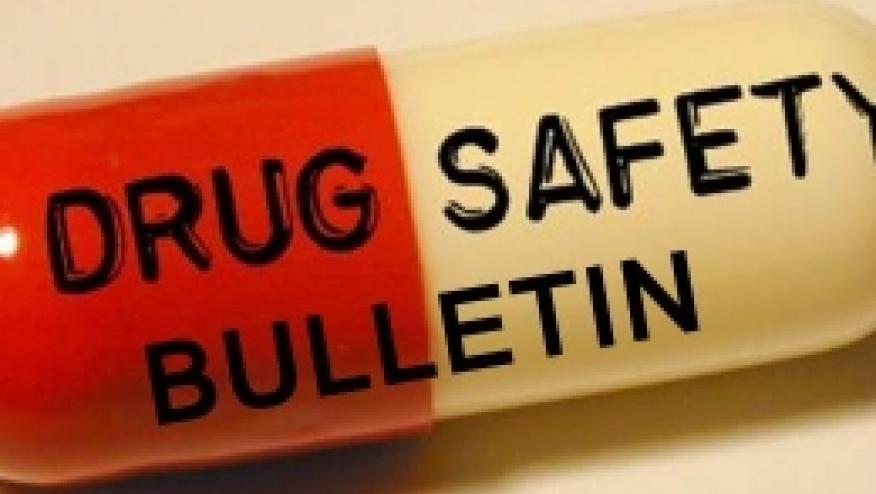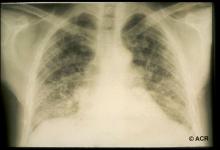DSB Reports and Updates - September 2016 Save

Safety Reports from the Literature
- BSRBR Registry shows Prior Cancer Patients May Safely Receive TNF Inhibitors or Rituximab - 425 RA patients with a prior history of cancer where analyzed. Treatment with either a TNFi or RTX resulted in a roughly 50% lower risk of cancer recurrence compared to DMARD only treatment. http://buff.ly/2d0OMaQ
- TNF inhibitors do not increase risk of head and neck cancer recurrence -180 patients with head & neck cancer treated with TNF inhibitors or DMARD were compared. Recurrence or HNC-attributable death occurred in 5/31 (16.1%) patients in the TNFi group and 44/149 (29.5%) patients in the DMARD group (p = 0.17). TNFi did not increase risk of cancer recurrence (HR 0.75). http://buff.ly/2cDy5m9
- No higher risk of renal cell carcinoma (RCC) in IBD patients treated with TNF inhibitors - A retrospective case-control and cohort study over 25 years, analyzed IBD and rheumatic patients with a diagnosis of RCC (1990-2014) identified through the electronic database of a tertiary referral center. The risk of RCC was 0.8 (0.3-2.5) men and 1.4 (0.2-5.5) women. http://buff.ly/2cah6WO
- Biologic use not associated with a risk for cervical cancer - Kim et al analyzed 2 cohorts (Medicaid and commercial insurance) in over 22,000 pairs of patients initiating biologic and nonbiologic DMARDs. They found no significant difference between groups in the rates of high-grade for cervical dysplasia or cervical cancer. http://buff.ly/2cYbrbv
- TNF inhibitor-induced sardoidosis – a review of 90 cases of sarcoidosis resulting from TNF inhibitor use was reviewed; most of these occurred with etanercept. 71 cases there was at least a partial resolution by discontinuation of the anti-TNF treatment, initiation of steroids or both. Re-initiation of anti-TNF therapy gave relapse in 7 out of 20 cases. http://buff.ly/2cy4lq5
- Monitoring social media may not have utility - Recent FDA initiatives to identify early adverse events (AE) have proposed to data mine EMRs and follow social media for early signals. A recent study looked at social media postings and FAERS (Medwatch reports) between 2001-2014 for 2 drugs, atorvastatin and sibutramine. They found that social media AE reporters were younger and focused on less-serious and fewer types of AEs than FAERS reporters. Caution and further study was advised. http://buff.ly/2cXWfvi
- Review of polypharmacy - For those interested this is a good review of polypharmacy, who is at risk and how to avoid it. http://buff.ly/2d0UsRO
FDA Updates – January through September 2016
- FDA Advisory Committee Recommends removal of “black box” for Chantix. The FDA’s Psychopharmacologic Drugs Advisory Committee and Drug Safety Risk Management Advisory Committees have recently reviewed data from EAGLES (Evaluating Adverse Events in a Global Smoking Cessation Study) evaluating the neuropsychiatric safety of CHANTIX® (varenicline). The Committees recommended by a majority vote to remove the boxed warning regarding serious neuropsychiatric adverse events from the CHANTIX labeling. Final decision from the FDA is pending. EAGLES was a randomized trial to compare the safety and efficacy of all three currently approved smoking cessation therapies, including CHANTIX, in more than 8,000 smokers with and without a history of psychiatric disorders. http://buff.ly/2d2Nq28
- FDA recommends the strongest black box warnings for opioid analgesics, prescription opioid cough products, and benzodiazepines. FDA has issued a Drug Safety Communication stating that there is sufficient evidence exists that these agents carry serious risks of sedation, respiratory depression, coma, and death associated with combined use of benzodiazepines or central nervous system (“CNS”) depressants (including alcohol) and opioid medicines. As a result, FDA has concluded that a boxed warning is appropriate to highlight these serious risks. They further state that health care professionals “should limit prescribing opioid pain medicines with benzodiazepines or other CNS depressants only to patients for whom alternative treatment options are inadequate. If these medicines are prescribed together, limit the dosages and duration of each drug to the minimum possible while achieving the desired clinical effect. Warn patients and caregivers about the risks of slowed or difficult breathing and/or sedation, and the associated signs and symptoms. Avoid prescribing prescription opioid cough medicines for patients taking benzodiazepines or other CNS depressants, including alcohol”. http://buff.ly/2cM2teg
2016 FDA Safety Labeling Changes: New drug labeling changes for the following medications:
- All NSAIDs - added language about the risks of cardiovascular thrombotic events, heart failure and edema. Nonsteroidal anti-inflammatory drugs (NSAIDs) cause an increased risk of serious cardiovascular thrombotic events, including myocardial infarction and stroke, which can be fatal. This risk may occur early in treatment and may increase with duration of use. Post-MI use of NSAIDs may increase risk of reinfarction, CV-related death, and all-cause mortality beginning in the first week of treatment. The increased relative risk of death in NSAID users may persist for 4 years. In patients with heart failure, NSAID use increased the risk of MI, hospitalization for heart failure, and death. Avoid the use of {Product} in patients with severe heart failure unless the benefits are expected to outweigh the risk of worsening heart failure. May 2016 http://buff.ly/2cY1jQm
- Anakinra (Kineret) - Cholesterol elevations were observed in some patients treated with Kineret. May 2016 http://buff.ly/2cY1jQm
- Simponi (golimumab) - In postmarketing experience, serious systemic hypersensitivity reactions (including anaphylaxis) have been reported following administration of the subcutaneous and intravenous formulations of golimumab including SIMPONI ARIA. Hypersensitivity reactions including hives, pruritus, dyspnea, and nausea, were reported during infusion and generally within an hour after infusion. Some of these reactions occurred after the first administration of golimumab. February 2016 http://buff.ly/2cY0RkN
- Zolendronic acid (Zometa) - Cases of osteonecrosis (primarily involving the jaw but also of other anatomical sites including hip, femur and external auditory canal) have been reported predominantly in cancer patients treated with intravenous bisphosphonates including Zometa. Many of these patients were also receiving chemotherapy and corticosteroids which may be a risk factor for ONJ. March 2016 http://buff.ly/2ccSSzi
- Adalimumab (Humira) - discontinuation of HUMIRA should be considered if any of these (demyelinating/neurologic) disorders develop. There is a known association between intermediate uveitis and central demyelinating disorder. The safety of administering live or live-attenuated vaccines in infants exposed to HUMIRA in utero is unknown. Risks and benefits should be considered prior to vaccinating (live or live attenuated) exposed infants. In HUMIRA-treated patients, the rate of reported active tuberculosis was 0.20 per 100 patient-years and the rate of positive PPD conversion was 0.09 (replaces 0.10) per 100 patient-years. June 2016 http://buff.ly/2d0WAcm
- Canakinumab (Ilaris) - Limited data are available on the response to vaccinations with inactivated (killed) antigens in patients receiving ILARIS. The limited human data from postmarketing reports on use of ILARIS in pregnant women are not sufficient to inform a drug associated risk. July 2016
ADD THE FIRST COMMENT
Disclosures
The author has received compensation as an advisor or consultant on this subject







If you are a health practitioner, you may Login/Register to comment.
Due to the nature of these comment forums, only health practitioners are allowed to comment at this time.